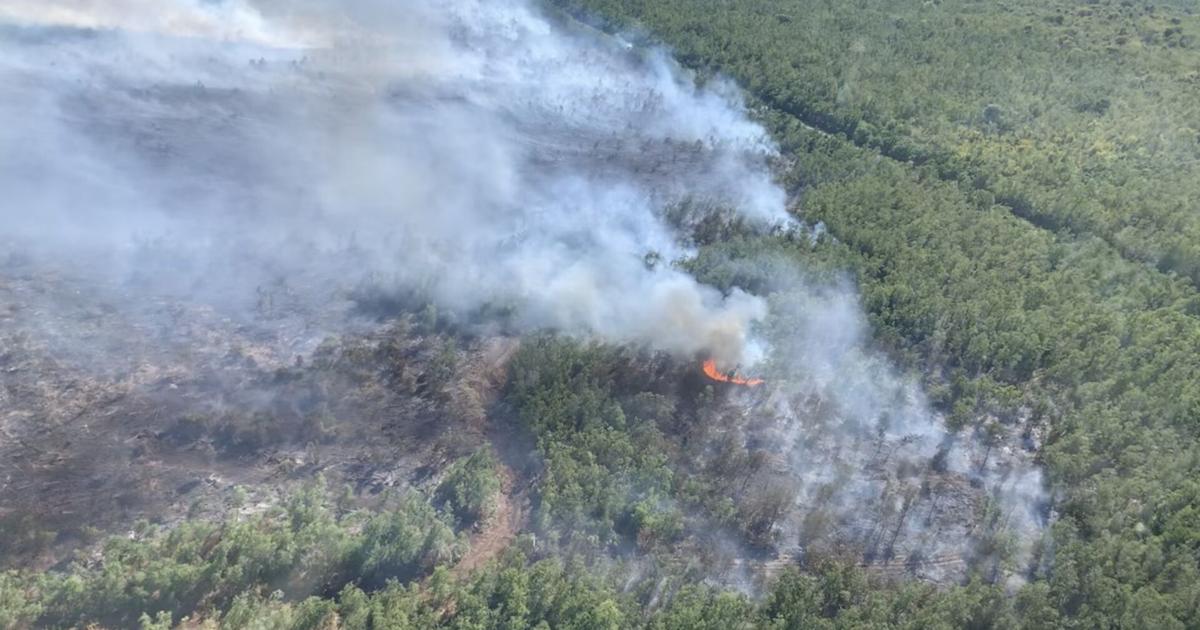Why does the mash fire smoke smell bad in New Orleans? Here's what a firefighter says
A fire in a New Orleans East LA swamp has dug into the boggy soil, known as 'peat,' and has produced foul-smelling smoke A New Orleans fire has caused a chemical-like smell that has been hanging over the city for almost a week, likely caused by a fire burning the soil in a wetland on the east edge of the city. The fire has been burning in a swamp on private land between Bayou Sauvage National Urban Wildlife Refuge and the Michoud Canal for at least six days. The district chief with the New Orleans Fire Department, Chris Mickal, said the fire started from a typical wetland fire, which is usually on dry brush and grass. The smell is similar to that of hay or tea, but when the fire gets into the ground, it turns out to be rotting vegetation. Peat fires can produce smoke laced with mercury and other toxic chemicals. No aerial water drops or other fire suppression efforts are planned.

公開済み : 2年前 沿って TRISTAN BAURICK | Staff writer の Environment
The harsh, chemical-like odor that’s been hanging over the New Orleans area for almost a week is likely caused by a fire burning the boggy soil in a wetland on the east edge of the city, according to fire officials. A typical wetland fire has a scent some people liken to hay or tea, but when the flames bore into the ground, the odors take a nasty turn. “Your usual marsh fire is on dry brush and grass, and it burns fast and has a sweet smell,” said Chris Mickal, a district chief with the New Orleans Fire Department. “But when (the fire) gets into that stuff underground, that’s rotting vegetation. And, yes, it starts stinking.”
The fire has been burning in a swamp on private land between Bayou Sauvage National Urban Wildlife Refuge and the Michoud Canal for at least six days. The NOFD isn’t sure how big the fire is or what caused it. Because it’s deep inside a hard-to-access part of the wetland, firefighters say they can’t access it or put it out. The dense wetland soil is known as peat. In Ireland, Finland and other countries with large peat bogs, the substance is cut into bricks, dried and then burned like coal to heat homes.
Bayou Sauvage manager Pon Dixson said wetland peat fires have a "more traditional chemical" odor than the blazes common in Louisiana marshes. Some New Orleans residents have compared the smell to nail polish remover or burning plastic. Peat fires can self-ignite after long periods of warm temperatures. They typically burn slowly at low heat and sometimes without flames. If people smell the smoke, it’s best to go indoors, especially sufferers of asthma and other respiratory issues, Mickal said. Some residents say the smoke has burned their lungs and eyes and caused nausea.
“It’s irritating people,” he said. “I’d recommend people stay inside if they’re smelling smoke, especially if they have health problems.” Peat fires can produce smoke laced with mercury and other toxic chemicals present in the soil. Smoke from a separate wetland fire in Barataria Preserve has been causing problems in parts of Jefferson Parish. Classes were canceled on Thursday at two Jean Lafitte schools because smoke had made it difficult to see. On Friday, the fire was 80% contained, and classes had resumed. The Barataria fire is not believed to be contributing to the noxious odor in the New Orleans area.
How long will it last? Because peat is a potent fuel source, Dixson said the fire could last for weeks. No aerial water drops or other fire suppression efforts are planned. It may take a heavy rain to extinguish the fire, Mickal said. But there's no rain in the seven-day forecast, according to the National Weather Service in Slidell. “There’s no way to tell how long" the fire will last, he said. “How deep is that peat? We don’t know. If it starts raining, it may take care of itself.”
トピック: Louisiana, New Orleans
